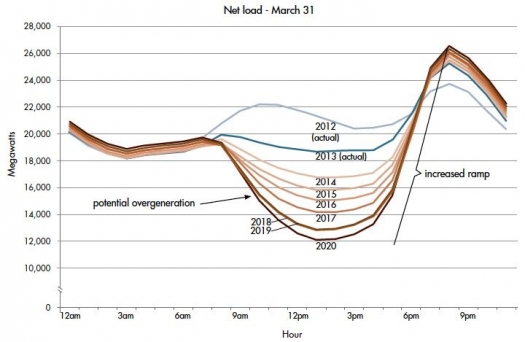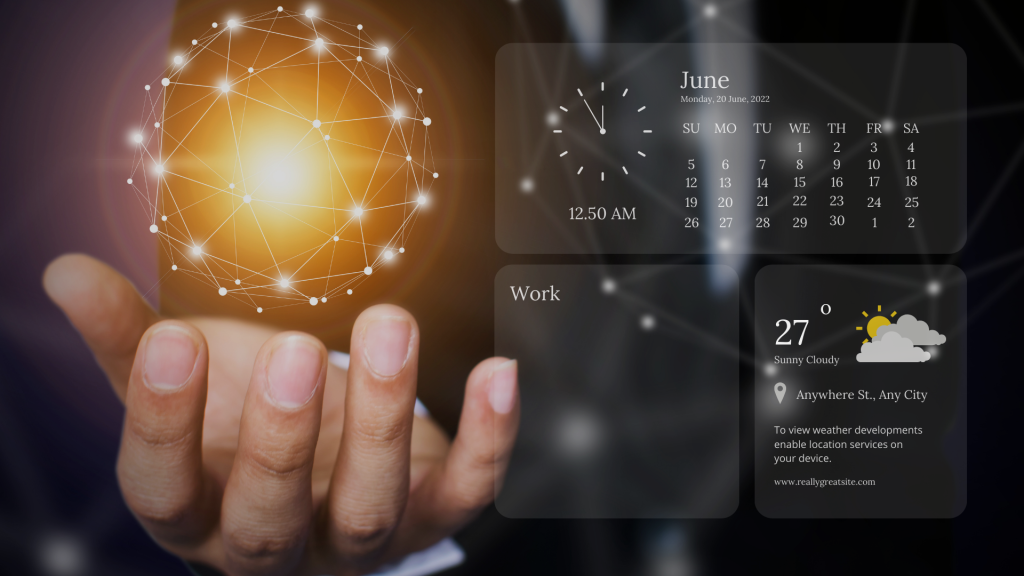The electrical industry is looking for ways to reshape daily power demand profiles in order to reduce the cost of providing energy to consumers. New rating structures and demand response programs are gaining momentum as utilities find smarter and more effective ways to influence consumer behavior.
The electric utility is the front-line between consumers and the electric power industry; however, the unbalanced daily load profile is a serious issue not only for distribution, but also for generation and transmission.
From a generation perspective, the demand for power increases at such a rate each evening that coal and nuclear plants can’t keep up and natural gas must be used to ramp up power supply in time. The natural gas peaking power plants used for this purpose are a relatively expensive form of generation and a source of carbon emissions. The issue of quickly rising demand in the evening is expected to get worse over time as the increase of photovoltaic generation exaggerates the form of the infamous duck curve.(1)

Figure 1: Duck curve. Courtesy of energy.gov
As for transmission and distribution, electrical infrastructure must be maintained to a level which supports the peak loads, even though these are significantly higher than the average operating load. This gets expensive when you consider the amount of copper and aluminum which goes into cables and overhead lines to carry the additional current and peak hours. High peak loads also lead to larger switchgear and transformers which, in turn, require larger concrete foundations and plots of land.
These extra costs are eventually passed on to consumers through their energy bill; however, the long-term reduction of retail energy prices is an incentive to which consumers are generally unresponsive. To solve the issue of peak loads, utilities must find more immediate and innovative ways to incentivize behavioral change. Here are some examples of strategies already being used:
Financial Incentives
Many utilities are looking to solve the problem of peak loads by changing the rating structure such that the operational costs incurred by power use are more accurately reflected in the power bill. Increasing the price of retail energy at peak hours is clearly an effective way to align the interests of consumers with those of the utility; however, the electricity distribution sector is highly-regulated so it takes a long time for new rating systems to be established. Progress is slowly being made towards effective time-based rates, which are likely to contribute greatly to the long-term reduction of peak loads.(2)
In the meantime, many utilities have realized that demand response is so effective that it is worth paying customers out of their own pocket for reducing consumption during peak times. Through participatory direct load control programs, consumers are given a financial incentive to cut-off or reduce their power consumption when requested to by the electric utility. Typically, the cost of paying consumers to participate in such a program is less than the cost of the upgrade and maintenance work required to support the natural peak load.
Asking Nicely
This may sound strange, but several utilities have found that simply by asking nicely and explaining the situation to their customers, electricity demand during peak hours can be significantly reduced.
A pilot in California has found that demand could be reduced by up to 5% on peak days by encouraging users to reduce load with targeted communication such as phone calls.(3) The asking nicely approach doesn’t force consumers to do anything, so it can be set up as an opt-out program in which many customers are likely to participate. In contrast, direct load control programs have a higher power reduction per customer but fail to attract many customers (in some cases as few as 5% choose to participate).
Gamification
Gamification involves using game-like elements and reward structures in a non-gaming context. This technique is starting to catch on as a means to convince energy consumers, especially millennials, to reduce their usage during peak periods.
The VTT Technical Research Centre of Finland has developed an app which awards points to users for curtailing energy usage and shifting usage outside of peak hours; these points can then be redeemed to give money to charities.(4) After trialing the project in Helsinki, Nice, and Vienna, it was found that 80% of households responded by reducing their energy consumption during periods of peak loads. In Nice, France, the system was used to reduce large heating loads on winter evenings. Participants in this trial reduced energy consumption by 28% between the peak hours of 6 pm and 8 pm.(5)
In Brisbane, Australia, a similar technique was used to reduce overall electricity consumption among young and less well-off energy consumers. By providing a fun, game-like structure, consumers were encouraged to reduce their energy usage and enjoy savings on their electricity bill. This resulted in an average saving of 12.3%.(6)
Using the Weather
Electricity usage is heavily affected by weather, with annual peaks usually coinciding with the hottest and coldest days of the year. Unlike many other usage patterns, energy consumers tend to turn on heating and cooling loads around the same time, often leading to troublesome spikes in power consumption.
The thermodynamic model of a house is characterized principally by a large thermal mass and a reasonable level of thermal insulation; these properties work together to slow the rate at which a house returns to ambient temperature after being heated or cooled. It follows that the temperature of a house can be changed a few hours in advance with the expectation that it will not deviate significantly over time.
Thanks to the availability of weather prediction data, utilities can anticipate temperature-related peaks before they happen and leverage the thermodynamics of housing to spread out the associated load. By convincing some consumers to pre-empt the heating and cooling of their houses, the total amount of electrical energy provided to perform these operations can be spread over a longer period, thereby reducing peak power consumption.
Of course, for a strategy like this to work, consumers need the ability to program or remotely control their home temperature systems. Utilities also need the tools to predict temperature-related peak loads, effectively inform consumers when these are about to occur, and provide suitable motivation for consumer participation.
Earth Networks is developing a solution which should help get the ball rolling. Their service integrates advanced weather prediction, smart meter data, and thermodynamic models of consumer houses to intelligently control heating and cooling devices in the home.
(1) The duck curve refers to the characteristic shape of daily power production by traditional generation sources due to the timing imbalance between peak demand and renewable energy production. https://energy.gov/eere/articles/confronting-duck-curve-how-address-over-generation-solar-energy
(2) https://www.smartgrid.gov/recovery_act/time_based_rate_programs.html
(3) https://www.utilitydive.com/news/could-reducing-peak-demand-5-be-as-simple-as-asking/329102/
(4) http://www.vttresearch.com/media/news/gamification-motivates-consumers-to-reduce-power-consumption-peaks
(5) https://www.youtube.com/watch?v=gkdUwbDqOyc
(6) https://www.thefifthestate.com.au/home-and-lifestyle/how-gamification-is-saving-brisbane-renters-
thousands-on-energy-bills/82684









